Breast Augmentation in Argentina
Search and Compare the Best Clinics and Doctors at the Lowest Prices for Breast Augmentation in Argentina

Find the best clinics for Breast Augmentation in Argentina
With Medijump you can browse 1 facilities offering Breast Augmentation procedures in Argentina. The cheapest price available is $1,849 in Cordoba. And for the cheapest price globally, prices start from $208 in Hungary.
Breast Augmentation in Cordoba
Price: $ 1,849
Hungary offers the best prices Worldwide
Price: $ 208
Sublimis, located in Nueva Cordoba, Cordoba, Argentina offers patients Breast Augmentation procedures among its total of 49 available procedures, across 10 different specialties. The cost of a Breast Augmentation procedure starts from £1,451, whilst the national average price is approximately £1,451. All procedures and treatments are undertaken by just a small team of specialists, with 3 in total at the Hospital, and they are accredited by IFSO - International Federation for the Surgery of Obesity and Metabolic Disorders
- Home
- Argentina
Compare Before & After Photos of _procedure_photos.phpBreast Augmentation


Full-side view
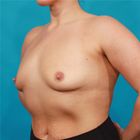

Half-side view


Front view


Half-side view


Front view
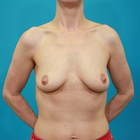

Front view
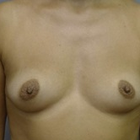

Front view

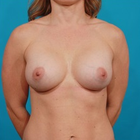
Front view
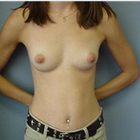
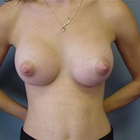
Front view
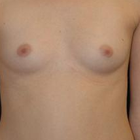
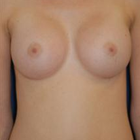
Front view
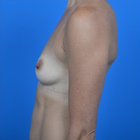

Full-side view
WHY US?
At Medijump, we're making medical easy. You can search, compare, discuss, and book your medical all in one place. We open the door to the best medical providers worldwide, saving you time and energy along the way, and it's all for FREE, no hidden fees, and no price markups guaranteed. So what are you waiting for?

Free

Best Price

Widest Selection

Risk-Free
What you need to know about Breast Augmentation in Argentina

Breast augmentation, also known as a Boob Job or Breast Enlargement, is a surgical procedure aimed at increasing breast size, enhancing shape, or improving symmetry. In Argentina, this procedure is carried out by board-certified plastic surgeons in accredited medical facilities, ensuring both safety and quality.
What is the cost of Breast Augmentation in Argentina?
Prices in Argentina are competitive, often offering savings without compromising on quality, especially when compared to costs in the US or Europe. However, factors such as surgeon’s fees, facility costs, and the type of implants affect the total cost.
What does a Breast Augmentation Procedure Involve?
The surgery involves placing breast implants under the breast tissue or chest muscles. Choices between saline or silicone implants can be made based on the desired feel and appearance. This is something your surgeon will discuss with you prior to even travelling.
How Long Should I Stay in Argentina for a Breast Augmentation Procedure?
The length of stay in Argentina for a Breast Augmentation is subject to various factors, such as your overall health, the specific nature of the procedure, and your individual recovery rate. Generally, Breast Augmentation surgery is an outpatient process, meaning you may be able to return home on the same day. However, a stay of up to two days might be necessary if your procedure is more intricate.
Although the hospital stay is relatively brief, it is advisable to remain in Argentina for at least one-week post-procedure. This timeframe allows for initial recovery and a follow-up appointment with the surgeon. Moreover, in the event of any complications, prompt medical assistance will be accessible. Thorough knowledge of the recovery process and its duration is crucial for proper preparation and managing stress during treatment.
What's the Recovery Time for Breast Augmentation Procedures in Argentina?
Post-surgery, a recovery period of one to two weeks is generally required, with follow-up visits to the surgeon. It's crucial to follow all post-op instructions for optimal healing.
Experiencing swelling and discomfort following the operation is normal, both of which should gradually alleviate with time. You will be required to wear a compression garment, take prescribed medications, and maintain a healthy lifestyle for an effective recovery.
What sort of Aftercare is Required for Breast Augmentation Procedures in Argentina?
Post-operative care is critical for the success of a Breast Augmentation. The initial recovery phase usually includes prescribed medications to alleviate pain and avert infection. Individuals can normally resume everyday activities within a few weeks, depending on their healing pace and bodily responses. However, it is advisable to refrain from vigorous activities for a minimum of six weeks post-procedure.
What's the Success Rate of Breast Augmentation Procedures in Argentina?
In Argentina, Breast Augmentation boasts a relatively high success rate, which contributes to its immense popularity among individuals seeking improvements in their physical appearance. Numerous patients have reported satisfaction and enhanced confidence after undergoing the procedure, making it a widely favoured cosmetic surgery.
Are there Alternatives to Breast Augmentation Procedures in Argentina?
In Argentina, there are several alternatives to the Breast Augmentation. If you're considering breast augmentation strictly for cosmetic reasons and prefer non-surgical options, various suitable methods are available. Alternatives include fat grafting, hormonal therapy, and natural remedies. Fat grafting, also known as fat transfer, involves removing fat from different body parts and injecting it into your breasts. This approach is regarded as safer because it employs the body's tissue, minimizing complications.
What Should You Expect Before and After the Procedure?
Prior to the procedure, your surgeon will discuss your expectations and the anticipated outcomes of your Breast Augmentation. The preoperative consultation comprises an in-depth conversation about your medical history, a physical examination, and an outline of the procedure and postoperative care. Open and candid communication with your healthcare provider is crucial at this stage to ensure the treatment matches your objectives.
Post-procedure, initial swelling and discomfort are normal and can be managed with prescribed medication. It's vital to adhere to your surgeon's post-operative guidelines, which include caring for surgical incisions, taking prescribed medications, and attending follow-up appointments. As swelling subsides and incision lines fade gradually, your enhanced breast profile will become apparent.
Keep in mind that the decision to pursue a Breast Augmentation is deeply personal and should not be made hastily. Allocate time to consider the advantages and drawbacks, and ensure you are well-informed.
What are the Risks and Complications of Breast Augmentation Procedures in Argentina?
As is the case with any surgical intervention, Breast Augmentation comes with its own set of risks and potential complications that need to be considered. These may include infections, bleeding, alterations in nipple or breast sensations, implant leakage or rupture, development of scar tissue, and unsatisfactory outcomes that could necessitate further surgeries.
Some individuals may also encounter complications tied to anesthesia, such as respiratory problems and reactions to medication. The psychological ramifications should not be overlooked, considering surgical procedures can impact mental well-being. An extensive conversation with your healthcare provider about these potential risks remains a key component in making an informed choice.
How to Prepare for Breast Augmentation in Argentina?
Thorough preparation plays a significant role in the success of your Breast Augmentation. Before the surgery, you must have detailed conversations with your surgeon about your medical background, allergies, current medications, and lifestyle habits such as smoking or alcohol consumption. You may need to cease certain medications and habits, including smoking, weeks before the procedure, as they can influence the healing process.
Practical preparations like organizing for someone to be with you on the day of the surgery, scheduling sufficient time off work for recovery, and establishing a comfortable space at home for recuperation can contribute to a smoother post-operative phase. Your surgeon's team will also advise you on pre-operative fasting and hygiene guidelines.
What are some Common Misconceptions about Breast Augmentation?
Despite its widespread popularity, numerous misconceptions surround the Breast Augmentation. One such misconception asserts that breast implants are permanent. In actuality, breast implants may require replacement after 10-15 years, with the specific timeframe depending on individual health and lifestyle factors. Another false assumption is that breast augmentation solely serves vanity purposes. In reality, many patients undergo this procedure following mastectomy or as part of gender-affirming surgery.
A further common myth suggests that breast augmentation hinders breastfeeding. While a few instances might affect breastfeeding, the majority of individuals with breast implants can successfully breastfeed.
Whilst the information presented here has been accurately sourced and verified by a medical professional for its accuracy, it is still advised to consult with your doctor before pursuing a medical treatment at one of the listed medical providers
No Time?
Tell us what you're looking for and we'll reachout to the top clinics all at once
Enquire Now

Popular Procedures in Argentina
Prices Start From $834

Prices Start From $500

Prices Start From $93

Prices Start From $85

Prices Start From $477

Prices Start From $931

Recommended Medical Centers in Argentina for Breast Augmentation

- Interpreter services
- Translation service
- Religious facilities
- Medical records transfer
- Medical travel insurance
- Health insurance coordination
- TV in the room
- Safe in the room
- Phone in the room
- Private rooms for patients available

- Interpreter services
- Translation service
- Religious facilities
- Medical records transfer
- Medical travel insurance
- Health insurance coordination
- TV in the room
- Safe in the room
- Phone in the room
- Private rooms for patients available

- Interpreter services
- Translation service
- Religious facilities
- Medical records transfer
- Medical travel insurance
- Health insurance coordination
- TV in the room
- Safe in the room
- Phone in the room
- Private rooms for patients available

- Interpreter services
- Translation service
- Religious facilities
- Medical records transfer
- Medical travel insurance
- Health insurance coordination
- TV in the room
- Safe in the room
- Phone in the room
- Private rooms for patients available
Breast Augmentation in and around Argentina
Introduction
Argentina is beautiful and intriguing, the country’s cultural diversity, coupled with its beautiful nature, ensures a wide-ranging natural and cultural experience for tourists. Today, Argentina is emerging as one of the most important destinations in the world for medical tourism. Today, you will find highly-experienced healthcare professionals, medical centers with cutting-edge technology, personalized patient care, and high-quality services. The majority of medical tourists in this country arrive from Latin American countries, the USA, and Canada. These medical tourists travel to Argentina to undergo dentistry, bariatric surgery, breast implants, and ophthalmology.
Popular Cities and Regions in Argentina
Known as the ‘Paris of South America,’ Buenos Aires is the capital and largest city in Argentina. It is known for its heavy European influence, which makes it diverse and vibrant. In this lively city, you will be welcomed with a dynamic food scene, magnificent architecture, colorful murals, lively nightlife, and glamorous tango. One of the most popular places in Argentina, besides Buenos Aires, in Córdoba, which is a fascinating city with a blend of old and new. In this city, you can find DJs spinning electro-tango next to 17th century Jesuit ruins. Another famous tourist destination is Mendoza. Filled with atmospheric plazas, leady avenues, and cosmopolitan cafes, this city captivates its tourists by its laid-back vibe. Those looking to relax on a beach should definitely visit Mar del Plata or Pinamar, where you can soak up some sun and have a lot of fun.
Transport in Argentina
Ezeiza International Airport is the largest airport in Argentina, located in Greater Buenos Aires. It connects the country with almost every country in the world, such as the US, Mexico, France, the UK, and the UAE. Since Argentina is very large, traveling around the country is easier with domestic flights. However, buses are popular among those who want to appreciate the country’s landscape. The best way to travel inside cities is by renting a car.
Visas in Argentina
Citizens of several countries, including Brazil, Ecuador, and the US, can visit and stay in Argentina without a visa for up to 90 days. Most other nationalities need to apply and obtain a visa to enter the country.
Weather in Argentina
Given the immense size of the country, the weather varies widely from one region to another. Buenos Aires tends to be hot from December to March, but it is very pleasant to visit between July and August. The south of Argentina is nice to visit from December to March, while July and August tend to be very cold. North Argentina has three climate zones and areas around the Iguazu Falls are generally tropical with humid weather.
Additional Info
- Local Currency: Argentine peso (ARS) is the official currency. 1 USD is equivalent to 62 ARS.
- Money & Payments: You can find ATMs in nearly every city in Argentina. Most hotels, restaurants, and stores in major cities accept credit cards (Visa and MasterCard).
- Local Language: Spanish is the main language in the country. English is also widely spoken as it is obligatory in primary school.
- Local Culture and Religion: Argentina is an overwhelmingly Christian country. Only a small percentage of the population practices other religions, such as Buddhism, Hinduism, Islam, and Judaism.
- Public holidays: Public holidays in Argentina usually include Catholic based holidays, such as Christmas, although other religious holidays such as the Islamic New Year is celebrated. The country also celebrates historic holidays, such as Independence Day.
Popular Searches
- Plastic Surgery in Thailand
- Dental Implants in Thailand
- Hair Transplant in Thailand
- Breast Augmentation Thailand
- Gastric Sleeve in Thailand
- Gender Reassignment Surgery in Thailand
- Laser Hair Removal in Bangkok
- Botox in Bangkok
- Dermatology in Bangkok
- Breast Augmentation in Bangkok
- Coolsculpting in Bangkok
- Veneers in Turkey
- Hair Transplant in Turkey
- Rhinoplasty in Turkey
- Stem Cell Therapy in Mexico
- Rhinoplasty in Mexico
- Liposuction in Mexico
- Coolsculpting in Tijuana
- Rhinoplasty in Korea
- Scar Removal in Korea
- Gastric Sleeve in Turkey
- Bone Marrow Transplant in India
- Invisalign in Malaysia
- Plastic Surgery in the Dominican Republic
- Tummy Tuck in the Dominican Republic
- Plastic and Cosmetic Surgery in Poland
- Rhinoplasty in Poland
- Hair Implant in Poland
- Dental Implants in Poland
- IVF in Turkey
